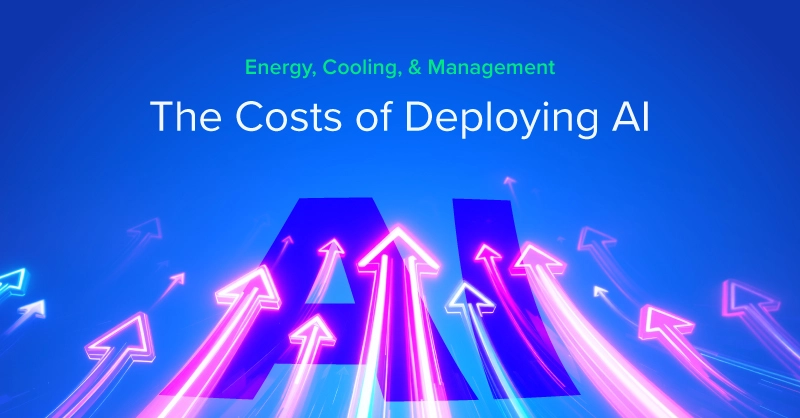
Introduction
Artificial Intelligence is transforming businesses across all industries, from small companies to Fortune 100 enterprises. As organizations integrate AI into their workflows, many are turning to on-premises solutions for better control, security, and cost management. The initial hardware investment is expensive, and the ongoing operational costs of these powerful systems can accumulate rapidly.
Cloud computing can help organizations in the short term with borrowed hardware, but extensive high-performance workloads will drive costs through the roof. For data-secure industries, such as healthcare and government, on-premise hardware is the only option.
This is where Total Cost of Ownership (TCO) becomes a crucial consideration, encompassing not just upfront costs but also power consumption, cooling, and management expenses over the system's lifetime. All of these costs have to be considered by the cloud provider and passed on to the customer. By carefully considering these factors, organizations can build an efficient and scalable on-premise AI infrastructure that delivers long-term value with better TCO than cloud in the long run.
Partner with Exxact as your solutions integrator, and we can deliver a custom computing cluster infrastructure that meets your needs.
Hardware Costs for AI
Specialized hardware for running AI is a big investment. NVIDIA is the crowned supplier for system-configurable GPUs that are purpose-built for AI and HPC workloads. The current generation NVIDIA Blackwell and the last generation NVIDIA Hopper are exceptional in performance, but come with a price.
The NVIDIA H200 NVL costs over $25,000 per GPU. However, with faster memory, more memory, and NVLink GPU-to-GPU interconnectivity, that warrants the price tag. An 8x H200 NVL server maximizing performance runs upwards of a couple of hundred thousand dollars. When organizations value speed, enterprise GPUs like NVIDIA H200 NVL will outperform any other PCIe GPU. However, any time it stays idle, it results in a lost opportunity cost.
- Accelerating Extensive Training Processes: Training state-of-the-art or custom AI models can take days, weeks, or even months. During the training process, your GPUs and computing cluster is running constantly.
- Constant Finetuning and Iterations: Model updates and refinement with new data are akin to training a new model, pushing your computing infrastructure to consume more power.
- 24/7 Large Scale Inferencing: Deploying your model to serve real-world applications is a demanding process, handling queries. Depending on your deployment (public or private) volume plays a huge part in the necessary compute required.
Viewing only the upfront cost of your hardware investment is an oversight. The value of higher-performance hardware can outweigh alternatives, depending on what you value. If you already have an existing data center infrastructure, your new hardware is still going to require ongoing costs like power, maintenance, space, and cooling to run an AI project.
Hardware Energy Costs of Your Data Center
Running AI spans further than just the hardware cost; it also includes the power draw or fuel. Think of it like a performance car. You can spend all the money in the world on modifying your car to be fast on straights and tight on corners, but your also going to need the fuel.
Training models and AI computations is inherently computationally and as a result, energy intensive and involves billions or trillions of calculations performed across massive dataset. Just like your performance race car, you’re going to need fuel for your compute. Enterprise workflows like this pushing hardware to its limits for extended periods. Let's put some numbers behind this:
- GPU Power Draw: The power draw is only for a single compute server. Depending on your data center size, that number can 10x or 100x.
- A single PCIe GPU NVIDIA H200 has a TDP of 600W (configurable). An 8x GPU server node, plus CPUs and memory, can easily draw 5-7 kW or more under full load.
- A single SXM GPU in the NVIDIA HGX B200 consumes 1000W (configurable). A total of 8 on an HGX baseboard plus CPU, memory, and additional hardware exceeds 15kW per system.
- Training Energy Consumption: The energy required to train models is staggering. You may not be training state of the art models, but the energy consumption will be great nonetheless
- Training GPT-3 (175 billion parameters) is estimated to have consumed around 1,287 megawatt-hours (MWh) of electricity. That's roughly equivalent to the annual electricity consumption of over 120 average US homes.
- While smaller, training models like Google's **BERT (Large)** required significant energy too, with some estimates around 650 kilowatt-hours (kWh)
With on-prem infrastructure, teams can tune systems, train during off-peak hours, and reduce waste. But AI Inferencing, like ChatGPT or a recommendation engine for e-commerce can snowball. If we estimate 0.5 Wh per query, 1 billion queries translates to 500 MWh per day, or 182,500 MWh per year just for inference!
Energy costs are a serious factor with global electricity prices on the rise. But on-premises infrastructure puts you in the driver’s seat—giving your team full control to optimize usage, schedule workloads during off-peak hours, and implement efficient cooling and power strategies.
Cooling Your Data Center
AI computing systems generate significant heat that must be managed properly. Heat is the enemy of computer hardware. As silicon gets too hot, it becomes unstable, inefficient, and more susceptible to damage.
Cooling is one of computing’s greatest challenges, contributing to over half of the total energy usage of a data center. The efficiency of a data center's cooling system is measured by Power Usage Effectiveness (PUE), where a lower value indicates better efficiency. For example, a PUE of 2.0 means every watt of computing power requires an additional watt is needed for cooling and whereas a PUE of 1.5 means an additional half-watt is needed.
- Air Cooling: The traditional approach involves using computer room air conditioners (CRACs) or air handlers (CRAHs) to flood the data center with cold air and directing the hot exhaust to a heat exchanger. While hot-isle and cold-isle air cooling is common, it is starting struggle with the introduction of extreme AI solutions like NVIDIA Hopper and NVIDIA Blackwell and the high heat densities of modern AI clusters.
- Liquid Cooling: As heat densities increase, liquid cooling is becoming increasingly necessary. Direct-to-chip liquid cooling uses cold plates attached directly to heat-generating components like GPUs and CPUs, circulating a coolant to draw heat away much more efficiently than air.
The choice and efficiency of the cooling system play a crucial role in managing the operational budget. Liquid cooling solutions require upfront investment but significantly reduce energy costs and improve efficiency for dense AI workloads. However, if your air-cooling implementation is sufficient, it can provide great results too.
On-premises teams have the advantage of selecting and tailoring cooling solutions that match their needs. With the right strategy, these investments make on-prem setups more cost-effective and sustainable over time.
GPU Cluster Management
Managing a large on-premises GPU cluster comes with operational challenges at the expense of full control over performance, cost, and uptime. With the right tools and processes, a powerful management layer is key to optimizing your resource efficiently. Exxact Clusters use OpenHPC and TrinityX as our cluster management tools of choice, both effective and user-friendly. This management layer involves coordinating several critical functions:
- Job Scheduling: Efficiently allocates AI tasks to GPUs using schedulers like Slurm and Kubernetes to manage priorities and resources.
- Load Balancing: Distributes workloads across GPUs to maximize utilization and prevent bottlenecks.
- Node Communication & Monitoring: Maintains high-speed connections between nodes and monitors system health.
- Data Management: Handles movement and access of large training datasets across the cluster.
Ensuring high reliability and uptime, which is critical for business operations relying on AI, adds further cost and complexity:
- Hardware Redundancy: Implementing redundant power supplies, network connections, and potentially spare nodes to tolerate failures.
- Failover Mechanisms: Software and infrastructure designs that allow workloads to automatically restart or migrate if a node or component fails.
As AI workloads scale, the complexity of managing the cluster grows exponentially:
- Interconnect Management: More GPUs mean more intricate network topologies to manage and optimize.
- Cooling & Power Integration: Ensuring cooling and power delivery scale effectively with the compute resources.
- Resource Tracking & Allocation: Accurately tracking usage, allocating resources to different teams or projects, and managing quotas becomes a significant task.
Cluster management, job scheduling tools, systems monitors, and operational expertise are an essential part of maintaining a high-performing AI infrastructure. A dedicated and experienced IT team is essential for managing on-premises solutions. When designed with intent, they become a long-term investment in scalability, reliability, and serve to lower TCO versus a cloud computing approach.
Best Practices for Reducing AI TCO
While AI workloads are undeniably resource-intensive, organizations running on-premise infrastructure hold a powerful advantage: complete control. With thoughtful planning and targeted optimization strategies, on-prem deployments can significantly reduce total cost of ownership and unlock maximum long-term ROI.
Hardware Optimization
- Energy-Efficient Hardware Selection: When selecting GPUs and servers, focus on workload specific performance. If your workload and industry requires fast time to result, invest in the best. If your workload isn't compute intensive (for example, no training only inference) consider other GPU options.
- Modular Components: Opt for modular hardware designs that enable upgrades and maintenance without full system replacements, reducing downtime and total cost.
- Right-Sized Power & Backup Systems: Avoid overprovisioning PDUs and UPS to prevent unnecessary energy and capital expenditure.
- Workload-Aligned Hardware: Deploy workload specific nodes. Allocate resources for mid-intensity jobs while reserving high-performance nodes for demanding tasks.
Cooling Strategies
- Liquid Cooling Solutions: For high-density deployments and high performance servers, strongly consider liquid cooling to reduce energy spent.
- Air Flow Management: Implement containment strategies (hot aisle/cold aisle) in air-cooled environments to improve efficiency.
- AI-Powered Cooling: Like the DeepMind x Google case study, use AI algorithms to optimize cooling systems, achieving significant reductions in energy usage.
Management & Optimization
- Smart GPU Scheduling: Implement advanced job schedulers and resource managers to keep utilization rates high through resource pooling and job prioritization.
- Comprehensive Monitoring: Deploy monitoring tools at every level to track utilization, power draw, temperature, and performance metrics.
- Software Optimization: Use techniques like model pruning, quantization, and knowledge distillation to create more efficient models.
With the right combination of hardware, scheduling, monitoring, and cooling, on-premise AI infrastructure doesn't just compete with cloud — it can outperform it in long-term cost efficiency and operational control.
Conclusion
While AI offers incredible potential, implementing it successfully requires careful consideration of the complete operational picture. The excitement around powerful models and cutting-edge hardware must be balanced with practical considerations.
Total Cost of Ownership (TCO) is crucial when planning AI infrastructure. This encompasses three key factors: energy consumption, cooling requirements, and cluster management. These factors directly impact your organization's bottom line and ability to scale.
Success in AI deployment requires a strategic approach. Organizations need to invest in efficient hardware, optimize cooling systems, implement strong management practices, and continuously monitor performance. It's not just about running advanced models - it's about running them efficiently and sustainably.
For organizations with steady AI computing needs, a well-optimized on-premises solution typically provides better cost control, total cost of ownership, and ROI compared to cloud alternatives. Contact Exxact today to learn how you can build your ideal computing infrastructure.
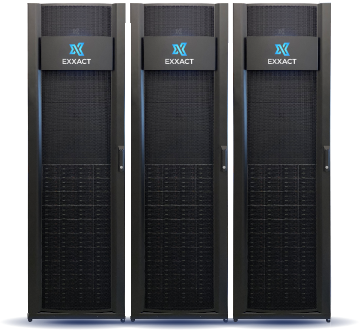
Fueling Innovation with an Exxact Designed Computing Cluster
Deploying full-scale AI models can be accelerated exponentially with the right computing infrastructure. Storage, head node, networking, compute - all components of your next Exxact cluster are configurable to your workload to drive and accelerate research and innovation.
Get a Quote Today
The Costs of Deploying AI: Energy, Cooling, & Management
Introduction
Artificial Intelligence is transforming businesses across all industries, from small companies to Fortune 100 enterprises. As organizations integrate AI into their workflows, many are turning to on-premises solutions for better control, security, and cost management. The initial hardware investment is expensive, and the ongoing operational costs of these powerful systems can accumulate rapidly.
Cloud computing can help organizations in the short term with borrowed hardware, but extensive high-performance workloads will drive costs through the roof. For data-secure industries, such as healthcare and government, on-premise hardware is the only option.
This is where Total Cost of Ownership (TCO) becomes a crucial consideration, encompassing not just upfront costs but also power consumption, cooling, and management expenses over the system's lifetime. All of these costs have to be considered by the cloud provider and passed on to the customer. By carefully considering these factors, organizations can build an efficient and scalable on-premise AI infrastructure that delivers long-term value with better TCO than cloud in the long run.
Partner with Exxact as your solutions integrator, and we can deliver a custom computing cluster infrastructure that meets your needs.
Hardware Costs for AI
Specialized hardware for running AI is a big investment. NVIDIA is the crowned supplier for system-configurable GPUs that are purpose-built for AI and HPC workloads. The current generation NVIDIA Blackwell and the last generation NVIDIA Hopper are exceptional in performance, but come with a price.
The NVIDIA H200 NVL costs over $25,000 per GPU. However, with faster memory, more memory, and NVLink GPU-to-GPU interconnectivity, that warrants the price tag. An 8x H200 NVL server maximizing performance runs upwards of a couple of hundred thousand dollars. When organizations value speed, enterprise GPUs like NVIDIA H200 NVL will outperform any other PCIe GPU. However, any time it stays idle, it results in a lost opportunity cost.
- Accelerating Extensive Training Processes: Training state-of-the-art or custom AI models can take days, weeks, or even months. During the training process, your GPUs and computing cluster is running constantly.
- Constant Finetuning and Iterations: Model updates and refinement with new data are akin to training a new model, pushing your computing infrastructure to consume more power.
- 24/7 Large Scale Inferencing: Deploying your model to serve real-world applications is a demanding process, handling queries. Depending on your deployment (public or private) volume plays a huge part in the necessary compute required.
Viewing only the upfront cost of your hardware investment is an oversight. The value of higher-performance hardware can outweigh alternatives, depending on what you value. If you already have an existing data center infrastructure, your new hardware is still going to require ongoing costs like power, maintenance, space, and cooling to run an AI project.
Hardware Energy Costs of Your Data Center
Running AI spans further than just the hardware cost; it also includes the power draw or fuel. Think of it like a performance car. You can spend all the money in the world on modifying your car to be fast on straights and tight on corners, but your also going to need the fuel.
Training models and AI computations is inherently computationally and as a result, energy intensive and involves billions or trillions of calculations performed across massive dataset. Just like your performance race car, you’re going to need fuel for your compute. Enterprise workflows like this pushing hardware to its limits for extended periods. Let's put some numbers behind this:
- GPU Power Draw: The power draw is only for a single compute server. Depending on your data center size, that number can 10x or 100x.
- A single PCIe GPU NVIDIA H200 has a TDP of 600W (configurable). An 8x GPU server node, plus CPUs and memory, can easily draw 5-7 kW or more under full load.
- A single SXM GPU in the NVIDIA HGX B200 consumes 1000W (configurable). A total of 8 on an HGX baseboard plus CPU, memory, and additional hardware exceeds 15kW per system.
- Training Energy Consumption: The energy required to train models is staggering. You may not be training state of the art models, but the energy consumption will be great nonetheless
- Training GPT-3 (175 billion parameters) is estimated to have consumed around 1,287 megawatt-hours (MWh) of electricity. That's roughly equivalent to the annual electricity consumption of over 120 average US homes.
- While smaller, training models like Google's **BERT (Large)** required significant energy too, with some estimates around 650 kilowatt-hours (kWh)
With on-prem infrastructure, teams can tune systems, train during off-peak hours, and reduce waste. But AI Inferencing, like ChatGPT or a recommendation engine for e-commerce can snowball. If we estimate 0.5 Wh per query, 1 billion queries translates to 500 MWh per day, or 182,500 MWh per year just for inference!
Energy costs are a serious factor with global electricity prices on the rise. But on-premises infrastructure puts you in the driver’s seat—giving your team full control to optimize usage, schedule workloads during off-peak hours, and implement efficient cooling and power strategies.
Cooling Your Data Center
AI computing systems generate significant heat that must be managed properly. Heat is the enemy of computer hardware. As silicon gets too hot, it becomes unstable, inefficient, and more susceptible to damage.
Cooling is one of computing’s greatest challenges, contributing to over half of the total energy usage of a data center. The efficiency of a data center's cooling system is measured by Power Usage Effectiveness (PUE), where a lower value indicates better efficiency. For example, a PUE of 2.0 means every watt of computing power requires an additional watt is needed for cooling and whereas a PUE of 1.5 means an additional half-watt is needed.
- Air Cooling: The traditional approach involves using computer room air conditioners (CRACs) or air handlers (CRAHs) to flood the data center with cold air and directing the hot exhaust to a heat exchanger. While hot-isle and cold-isle air cooling is common, it is starting struggle with the introduction of extreme AI solutions like NVIDIA Hopper and NVIDIA Blackwell and the high heat densities of modern AI clusters.
- Liquid Cooling: As heat densities increase, liquid cooling is becoming increasingly necessary. Direct-to-chip liquid cooling uses cold plates attached directly to heat-generating components like GPUs and CPUs, circulating a coolant to draw heat away much more efficiently than air.
The choice and efficiency of the cooling system play a crucial role in managing the operational budget. Liquid cooling solutions require upfront investment but significantly reduce energy costs and improve efficiency for dense AI workloads. However, if your air-cooling implementation is sufficient, it can provide great results too.
On-premises teams have the advantage of selecting and tailoring cooling solutions that match their needs. With the right strategy, these investments make on-prem setups more cost-effective and sustainable over time.
GPU Cluster Management
Managing a large on-premises GPU cluster comes with operational challenges at the expense of full control over performance, cost, and uptime. With the right tools and processes, a powerful management layer is key to optimizing your resource efficiently. Exxact Clusters use OpenHPC and TrinityX as our cluster management tools of choice, both effective and user-friendly. This management layer involves coordinating several critical functions:
- Job Scheduling: Efficiently allocates AI tasks to GPUs using schedulers like Slurm and Kubernetes to manage priorities and resources.
- Load Balancing: Distributes workloads across GPUs to maximize utilization and prevent bottlenecks.
- Node Communication & Monitoring: Maintains high-speed connections between nodes and monitors system health.
- Data Management: Handles movement and access of large training datasets across the cluster.
Ensuring high reliability and uptime, which is critical for business operations relying on AI, adds further cost and complexity:
- Hardware Redundancy: Implementing redundant power supplies, network connections, and potentially spare nodes to tolerate failures.
- Failover Mechanisms: Software and infrastructure designs that allow workloads to automatically restart or migrate if a node or component fails.
As AI workloads scale, the complexity of managing the cluster grows exponentially:
- Interconnect Management: More GPUs mean more intricate network topologies to manage and optimize.
- Cooling & Power Integration: Ensuring cooling and power delivery scale effectively with the compute resources.
- Resource Tracking & Allocation: Accurately tracking usage, allocating resources to different teams or projects, and managing quotas becomes a significant task.
Cluster management, job scheduling tools, systems monitors, and operational expertise are an essential part of maintaining a high-performing AI infrastructure. A dedicated and experienced IT team is essential for managing on-premises solutions. When designed with intent, they become a long-term investment in scalability, reliability, and serve to lower TCO versus a cloud computing approach.
Best Practices for Reducing AI TCO
While AI workloads are undeniably resource-intensive, organizations running on-premise infrastructure hold a powerful advantage: complete control. With thoughtful planning and targeted optimization strategies, on-prem deployments can significantly reduce total cost of ownership and unlock maximum long-term ROI.
Hardware Optimization
- Energy-Efficient Hardware Selection: When selecting GPUs and servers, focus on workload specific performance. If your workload and industry requires fast time to result, invest in the best. If your workload isn't compute intensive (for example, no training only inference) consider other GPU options.
- Modular Components: Opt for modular hardware designs that enable upgrades and maintenance without full system replacements, reducing downtime and total cost.
- Right-Sized Power & Backup Systems: Avoid overprovisioning PDUs and UPS to prevent unnecessary energy and capital expenditure.
- Workload-Aligned Hardware: Deploy workload specific nodes. Allocate resources for mid-intensity jobs while reserving high-performance nodes for demanding tasks.
Cooling Strategies
- Liquid Cooling Solutions: For high-density deployments and high performance servers, strongly consider liquid cooling to reduce energy spent.
- Air Flow Management: Implement containment strategies (hot aisle/cold aisle) in air-cooled environments to improve efficiency.
- AI-Powered Cooling: Like the DeepMind x Google case study, use AI algorithms to optimize cooling systems, achieving significant reductions in energy usage.
Management & Optimization
- Smart GPU Scheduling: Implement advanced job schedulers and resource managers to keep utilization rates high through resource pooling and job prioritization.
- Comprehensive Monitoring: Deploy monitoring tools at every level to track utilization, power draw, temperature, and performance metrics.
- Software Optimization: Use techniques like model pruning, quantization, and knowledge distillation to create more efficient models.
With the right combination of hardware, scheduling, monitoring, and cooling, on-premise AI infrastructure doesn't just compete with cloud — it can outperform it in long-term cost efficiency and operational control.
Conclusion
While AI offers incredible potential, implementing it successfully requires careful consideration of the complete operational picture. The excitement around powerful models and cutting-edge hardware must be balanced with practical considerations.
Total Cost of Ownership (TCO) is crucial when planning AI infrastructure. This encompasses three key factors: energy consumption, cooling requirements, and cluster management. These factors directly impact your organization's bottom line and ability to scale.
Success in AI deployment requires a strategic approach. Organizations need to invest in efficient hardware, optimize cooling systems, implement strong management practices, and continuously monitor performance. It's not just about running advanced models - it's about running them efficiently and sustainably.
For organizations with steady AI computing needs, a well-optimized on-premises solution typically provides better cost control, total cost of ownership, and ROI compared to cloud alternatives. Contact Exxact today to learn how you can build your ideal computing infrastructure.

Fueling Innovation with an Exxact Designed Computing Cluster
Deploying full-scale AI models can be accelerated exponentially with the right computing infrastructure. Storage, head node, networking, compute - all components of your next Exxact cluster are configurable to your workload to drive and accelerate research and innovation.
Get a Quote Today
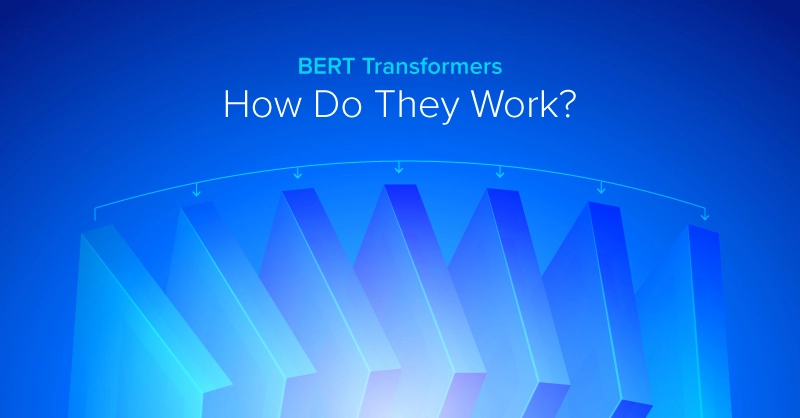
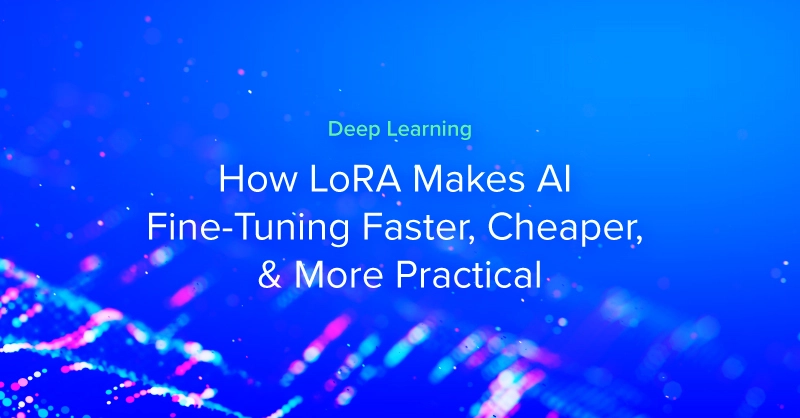
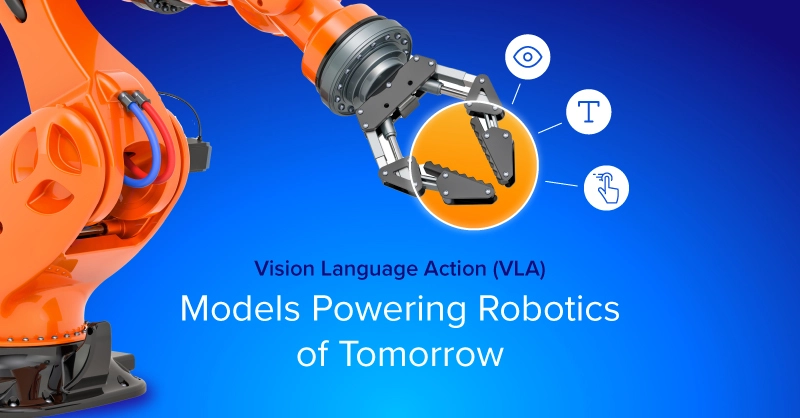
.jpg?format=webp)